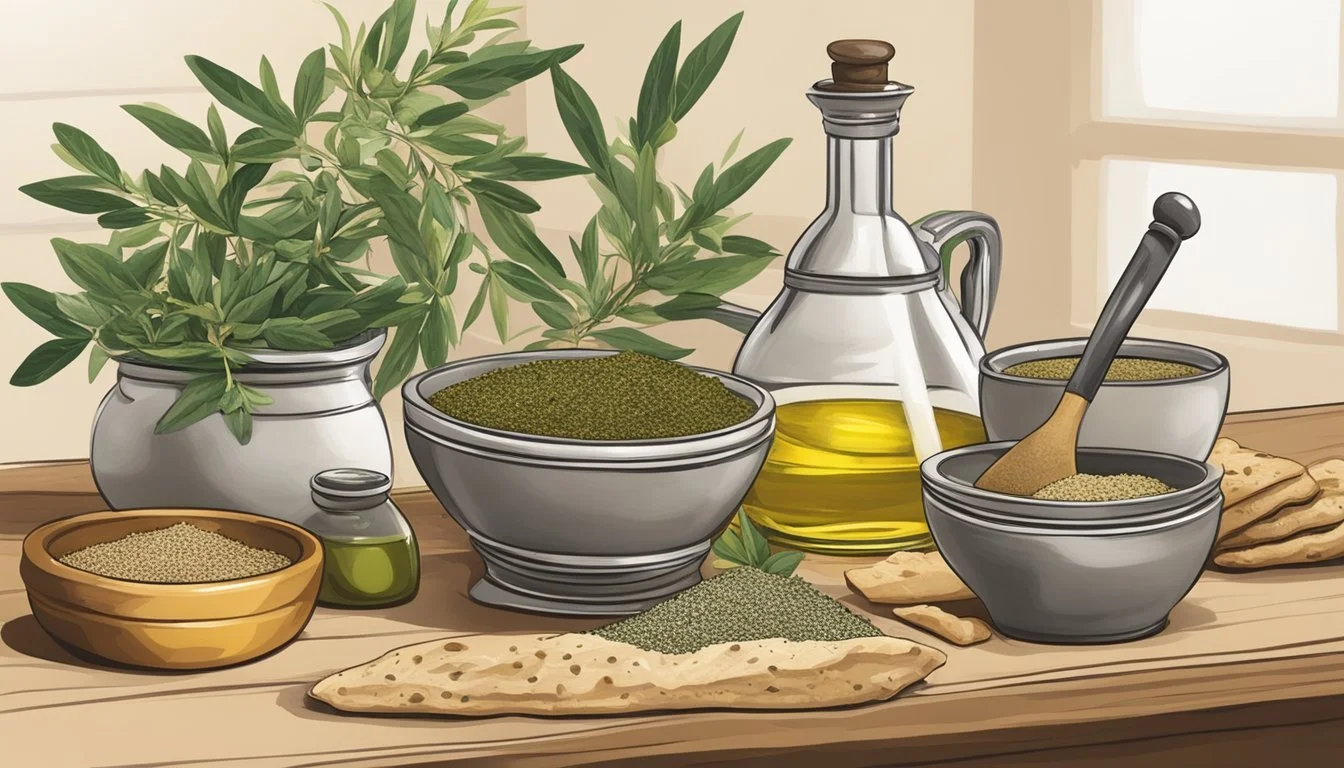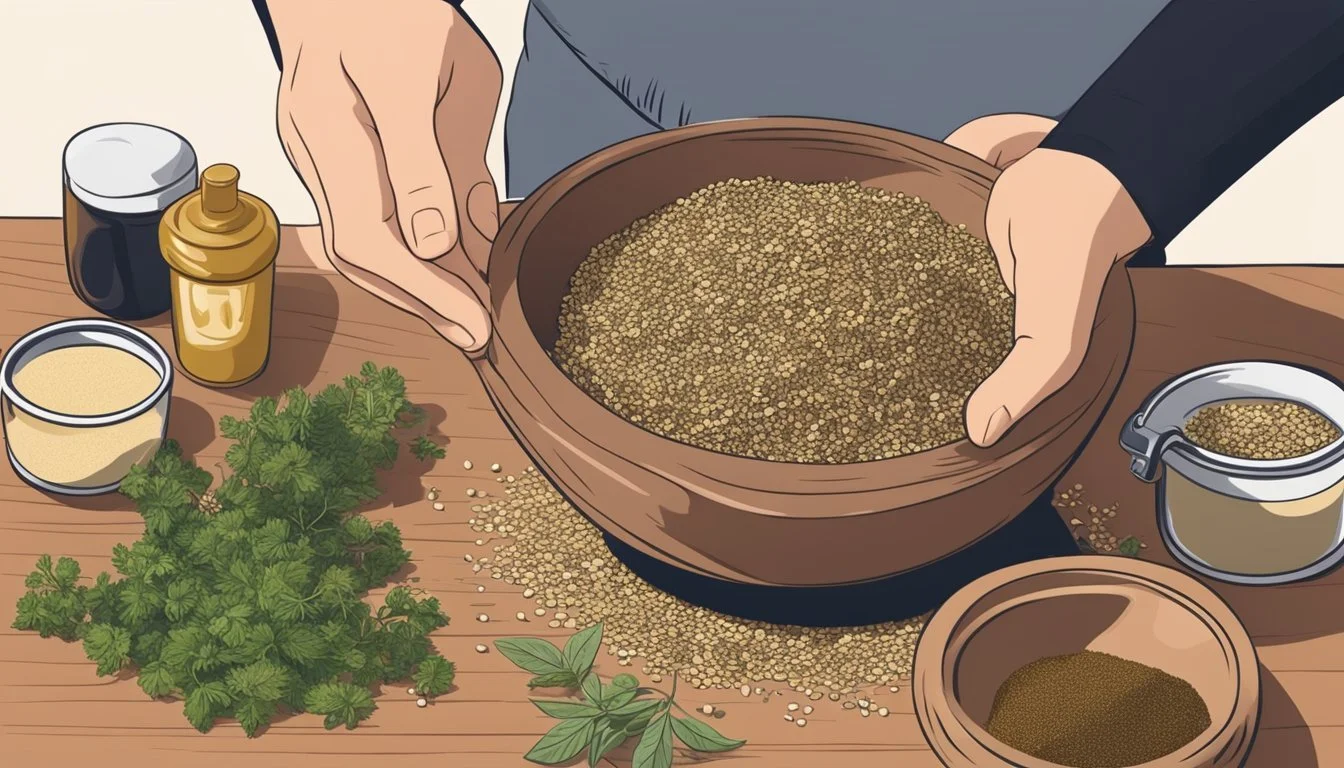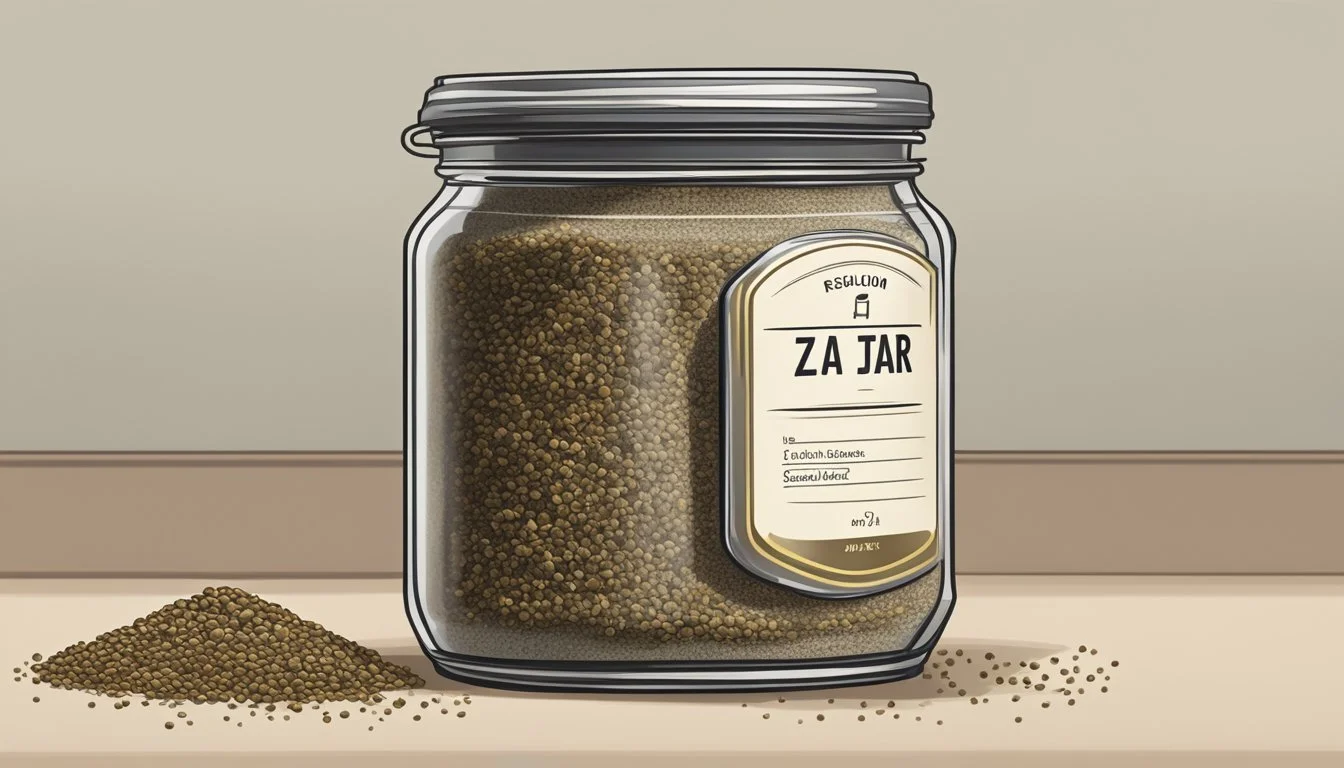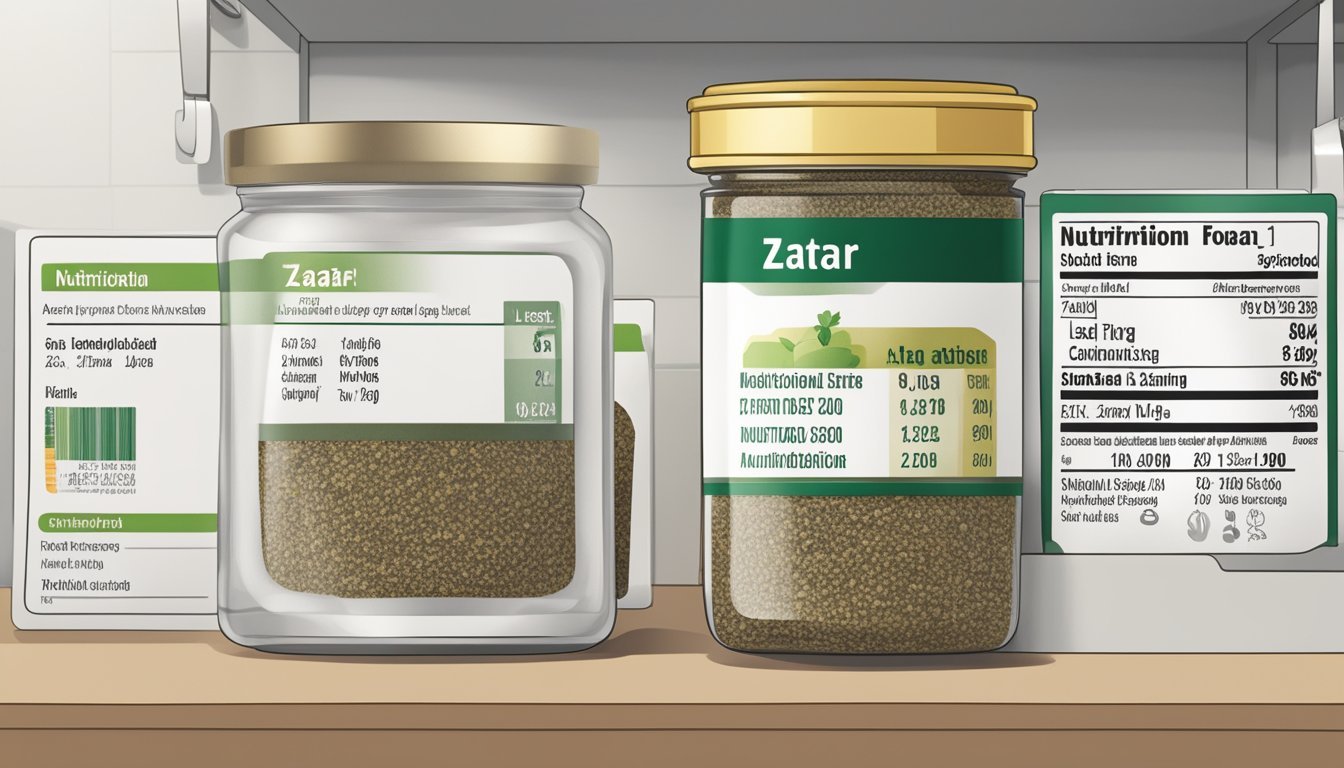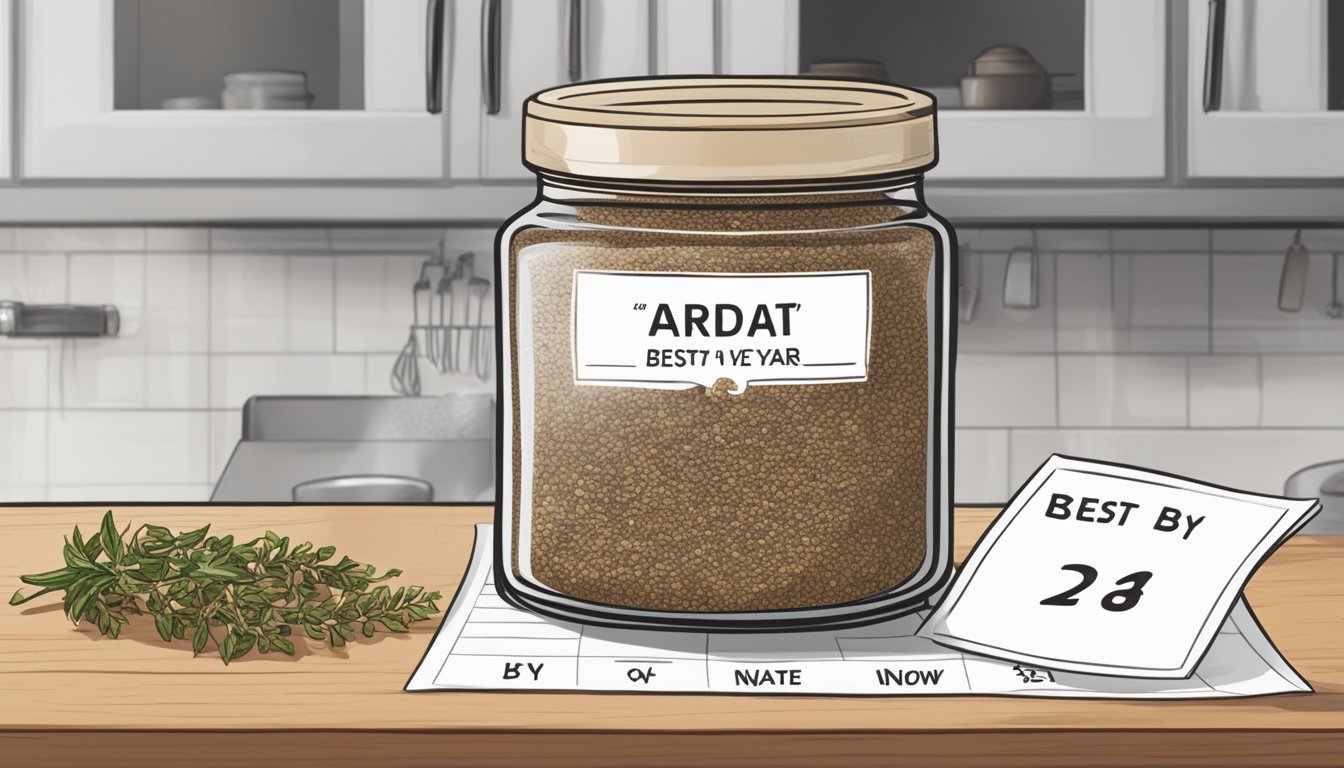How Long Does Zaatar Last?
Shelf Life and Storage Tips
Za'atar is a spice mix with deep roots in Middle Eastern cuisine, loved for its zesty, earthy, and nutty flavor profile. This blend traditionally includes ingredients like thyme, oregano, marjoram, sesame seeds, sumac, and occasionally salt. Each variety brings a unique twist to the mix, influenced by regional preferences and family recipes. As a staple in many kitchens, za'atar lends itself to a myriad of culinary uses, from a simple seasoning for olive oil dip to a robust rub for meats and vegetables.
The shelf life of za'atar, like many dried spice mixes, is influenced by factors such as storage conditions and ingredient freshness. Properly stored in an airtight container in a cool, dark place, za'atar can retain its flavor and potency for several months. Some enthusiasts suggest refrigeration as an ideal storage method, which can further preserve the za'atar's aromatic qualities and extend its lifespan.
Incorporation of za'atar into daily cooking is not just about adding flavor; it's also about embracing a piece of Middle Eastern culinary heritage. Popular recipes utilizing za'atar include sprinkling it over bread with olive oil, seasoning for meats, and adding a herby twist to vegetables. Its versatile nature makes za'atar a valuable addition to a variety of dishes, enhancing flavors with its characteristic tang.
What Is Za'atar?
Za'atar is a traditional Middle Eastern spice blend that boasts a fascinating array of flavors derived from a harmonious mixture of herbs and spices. It primarily includes:
Dried Herbs: Thyme, oregano, or hyssop.
Sesame Seeds: Adds a nutty and crunchy texture.
Sumac: Provides a tangy, lemony taste.
Salt: Enhances the overall flavor profile.
The specific herbs used in za'atar can vary, but the combination typically revolves around the earthy and savory notes of thyme or oregano. Sometimes, hyssop, an indigenous herb to the Middle East with a minty and slightly bitter taste, serves as a base for the blend.
Sumac, a defining ingredient of za'atar, contributes a deep red hue and a distinct fruity tartness that sets it apart from other spice mixtures. Sesame seeds add a subtle crunch and richness to the blend, making it not just a spice, but also a textural component in various dishes.
It's important to note that the word "za'atar" not only refers to the spice mixture but also denotes a specific herb in the region, similar to oregano. The brilliant melding of flavors and textures in za'atar makes it a versatile element in the culinary world, where it dresses up everything from baked bread to salads, meats, and dips.
Traditional Uses of Za'atar
Za'atar's versatility extends from the kitchen to cultural significance in Middle Eastern traditions. This section explores the spice blend's culinary roles and its integration into cultural practices.
Culinary Applications
Za'atar is a robust spice blend that infuses dishes with an earthy and tangy flavor profile, prevalent in Middle Eastern cuisine. Here are specific ways za'atar is used in cooking:
Bread: Za'atar is often baked onto flatbread or mixed with olive oil to brush on toast before baking.
Salads: A sprinkle of za'atar can add a herby zest to salads.
Marinade: The blend is used to marinate meats such as chicken, imparting a deep, aromatic flavor.
Spreads and Dips: Combining za'atar with olive oil or tahini creates a savory spread for bread or a dip for vegetables.
Vegetables: Roasting vegetables with a coating of za'atar enhances their natural flavors.
Each of these applications showcases za'atar's ability to elevate simple ingredients into flavorful dishes distinct to the region. Recipes often call for za'atar to provide a signature Middle Eastern touch.
Za'atar in Culture and Tradition
Za'atar holds a place of esteem in Middle Eastern society, where it is more than just a seasoning:
Symbolism: The herb and spice blend carries connotations of well-being and comfort in many communities.
Customs: Offering za'atar, especially when mixed with oil and spread on bread, is a common expression of hospitality in the region.
Culinary traditions involving za'atar are deeply intertwined with the daily life and customs of Middle Eastern cultures, making it a staple not only in the kitchen but in the fabric of social life.
Making Homemade Za'atar
Homemade za'atar offers a fresh, flavorful twist to enhance a variety of dishes, encapsulating a nutty, earthy, and tangy profile. Crafting a batch at home allows for personalization to taste preference.
Ingredients and Substitutes
For the base of the za'atar spice blend, one requires toasted sesame seeds, dried oregano, and sumac. These ingredients are non-negotiable for an authentic taste. One may find wild thyme or fresh oregano as substitutes, depending on regional variants and availability.
Toasted Sesame Seeds: They add a nutty flavor and should be lightly toasted for optimal aroma.
Dried Oregano: An essential herb that lends an earthy quality to the blend.
Sumac: A crucial spice that imparts a tangy note.
Combining and Proportions
Combining these ingredients in proper proportions is key to achieving the right balance of flavors. The typical ratio in a za'atar blend is about:
| Ingredient | Proportion |
|---------------------|-----------------------|
| Toasted sesame seeds| 1 part |
| Dried oregano | 2 parts |
| Sumac | 2 parts |One should thoroughly mix the ingredients to ensure a homogeneous spice blend. This can be done in a bowl or directly in a jar if storing for later use. It is advisable to adjust the ratios to taste, especially the sumac, as its tanginess can be quite pronounced.
Storing Za'atar
Properly storing za'atar is crucial for maintaining its freshness and quality. One should store za'atar in an environment that prevents degradation and preserves its aromatic properties.
Ideal Conditions
To ensure za'atar retains its original flavor and potency, it should be stored in a cool and dry place. An airtight container is essential to prevent moisture and other contaminants from compromising the blend. While a pantry can serve as a suitable storage location, sometimes the fridge offers a better alternative, especially for extending the freshness of store-bought blends.
Shelf Life and Expiration
Za'atar, when stored correctly, can last up to 6 months while still retaining good quality and flavor. After this period, za'atar does not necessarily spoil, but there might be a noticeable decline in pungency and taste. Regularly check the spice cabinet to ensure that za'atar and other spices are within their optimal use date and conditions have not adversely affected their quality.
Nutritional Information
Za'atar is a flavorful Middle Eastern spice blend that not only enhances the taste of various dishes but also brings with it a modest nutritional profile. It's important for consumers to understand what nutrients this spice blend contains and how they can benefit from them.
Calories and Nutritional Benefits
A typical serving of za'atar has few calories, making it an excellent choice for flavoring food without significantly increasing caloric intake. The blend is composed mainly of herbs and spices that contribute to its overall nutritional benefit. Za'atar contains sesame seeds, which are a healthy source of fat and protein, and the herbs in the blend, such as thyme and oregano, are known for their powerful antioxidant properties.
Calories: Minimal
Protein: Present from sesame seeds
Healthy Fats: Sesame seeds provide beneficial fats
Vitamins and Minerals Content
Although za'atar is not consumed in large quantities, the spices and herbs within the blend contain vitamins and minerals that contribute to a healthy diet. Thyme and oregano, for example, are herbs rich in phenolic compounds with antioxidant effects. The sesame seeds found in za'atar are a good source of calcium and iron.
Iron: Essential for oxygen transport in the body; present in sesame seeds
Calcium: Key for bone health; found in sesame seeds
In summary, za'atar provides more than just a burst of flavor—it offers a range of nutritional properties that can play a part in a healthy diet.
Versatile Recipes with Za'atar
Za'atar brings a unique tanginess to dishes, with a flair that can transform the simplest ingredients. It can be adapted across various foods including meats, vegetables, and bread, playing well with labneh, hummus, and as a spice in a range of marinades.
Za'atar as a Flavor Enhancer
Za'atar functions adeptly as a flavor enhancer, boosting the taste profile of numerous dishes. Chicken or meats can be rubbed with za'atar before grilling, infusing them with its characteristic earthy and sour notes. For vegetables, tossing them in za'atar and olive oil before roasting brings out a delightful complexity. Simple baked goods like flatbreads or pita can be elevated by sprinkling za'atar on top before baking, giving them an appetizing appearance and a burst of flavor.
Meats & Chicken: Rub za'atar alone or mixed with olive oil onto the meat before cooking.
Vegetables: Sprinkle za'atar over vegetables with a drizzle of olive oil for roasting.
Pita & Baked Goods: Dust pita bread with za'atar for a quick and flavorful snack.
Creative Ways to Incorporate Za'atar
Za'atar's adaptability extends to unconventional uses that showcase its versatility. Stir it into yogurt to create a zesty dip or marinade for chicken. Sprinkle it over popcorn for an unexpected snack with a Middle Eastern twist. It can also make a vibrant addition to salads, providing a pop of flavor without overwhelming the palate. Rice dishes benefit from a touch of za'atar, adding a warm, nutty flavor that complements both simple and complex recipes.
Yogurt: Mix za'atar into yogurt to accompany dishes or as a base for marinades.
Popcorn: Toss popcorn with za'atar for a quick, tangy treat.
Salads: Add za'atar to vinaigrettes or sprinkle over salads for added depth.
Rice: Stir za'atar into rice dishes to enhance the flavor profile.
Global Influence and Variations
Za'atar has seen a prominent rise in popularity, spreading far beyond its Mediterranean and Middle Eastern roots to become a celebrated element in international cuisine. It exemplifies a complex interplay of savory flavors that vary by region and have been incorporated into diverse culinary traditions.
Regional Differences
The precise blend of za'atar can differ greatly between regions. In the Middle East, the mixture frequently contains thyme, marjoram, oregano—often from the species Origanum syriacum—and toasted sesame seeds. Sumac is valued for its tangy, almost lemony taste and vibrant red color, adding both flavor and visual appeal to the mix. Differences often hinge on the balance of these core components. For example, in Jordan, the za'atar blend might have a higher percentage of sumac, giving it a distinctive reddish tint and a sharper taste.
Mediterranean: Thyme and oregano-based mixes, often lighter on sesame.
Middle Eastern variations: Can include cumin or coriander, imparting a warm, earthy character.
Za'atar in International Cuisine
As za'atar's global influence grows, its use has expanded in international cuisine, particularly in the USA and within Jewish food traditions. It's used not just as a seasoning for traditional Middle Eastern dishes but also in contemporary Western culinary applications. Chefs across the world have begun to use za'atar in a variety of ways, such as:
Flavoring for dips and spreads, pairing especially well with olive oil.
Seasoning in marinades for meats or vegetables, introducing a Mediterranean or Middle Eastern twist to the dishes.
Topping for breads, like flatbreads or bagels (how long do bagels last?), bringing a unique savory element to baked goods.
Contemporary interpretations even see za'atar being sprinkled over sweet dishes to create a fusion of flavors. As it garners more attention, za'atar is poised to continue proliferating across culinary boundaries.
FAQs about Za'atar
What is Za'atar?
Za'atar is a spice mixture, typically comprising dried herbs such as thyme and oregano, sesame seeds, dried sumac, and often salt. Variants may include spices like cumin.
How long does Za'atar last?
When stored properly in an airtight container in a cool, dark place, Za'atar can last up to 2-3 years. Refrigeration may extend its shelf life.
Can Za'atar be a staple in my kitchen?
Yes, Za'atar is a versatile staple that can add flavor to numerous dishes, ranging from bread to meats and vegetables.
Are there different recipes for Za'atar spice blends? Yes, recipes can vary regionally and may include additions like cumin, orange zest, or dill, catering to personal preference.
Is Za'atar suitable for adding to dishes like cucumbers or other vegetables? Absolutely. It adds a zesty, earthy flavor that complements the freshness of vegetables like cucumbers.
How do I use Za'atar?
Za'atar is used by simply sprinkling it on various dishes, mixing with olive oil to make a spread, or incorporating it into marinades.
Can I share my own Za'atar recipes on platforms like Instagram?
Yes, many home cooks and food enthusiasts comment on and share their Za'atar recipes on social media platforms like Instagram.



